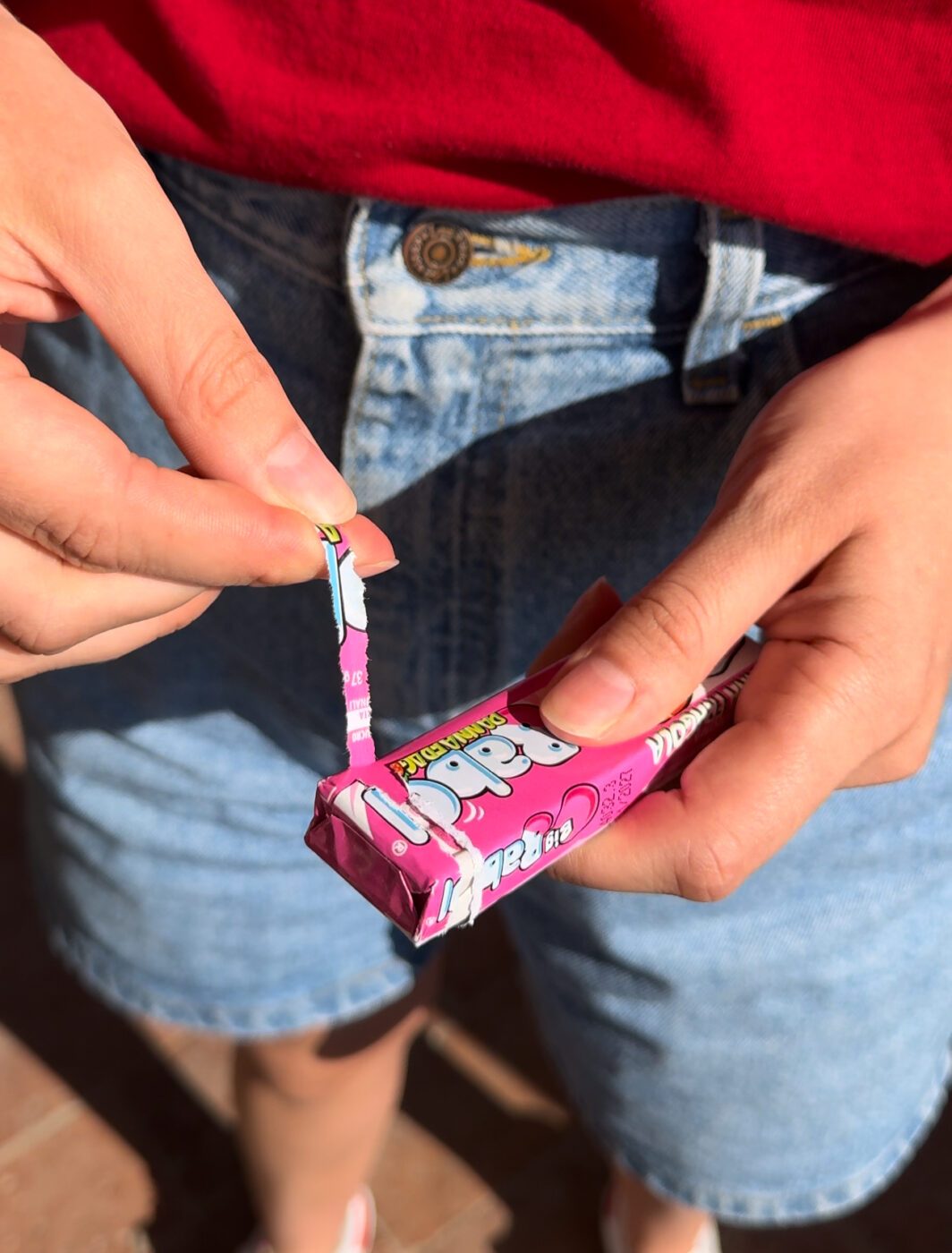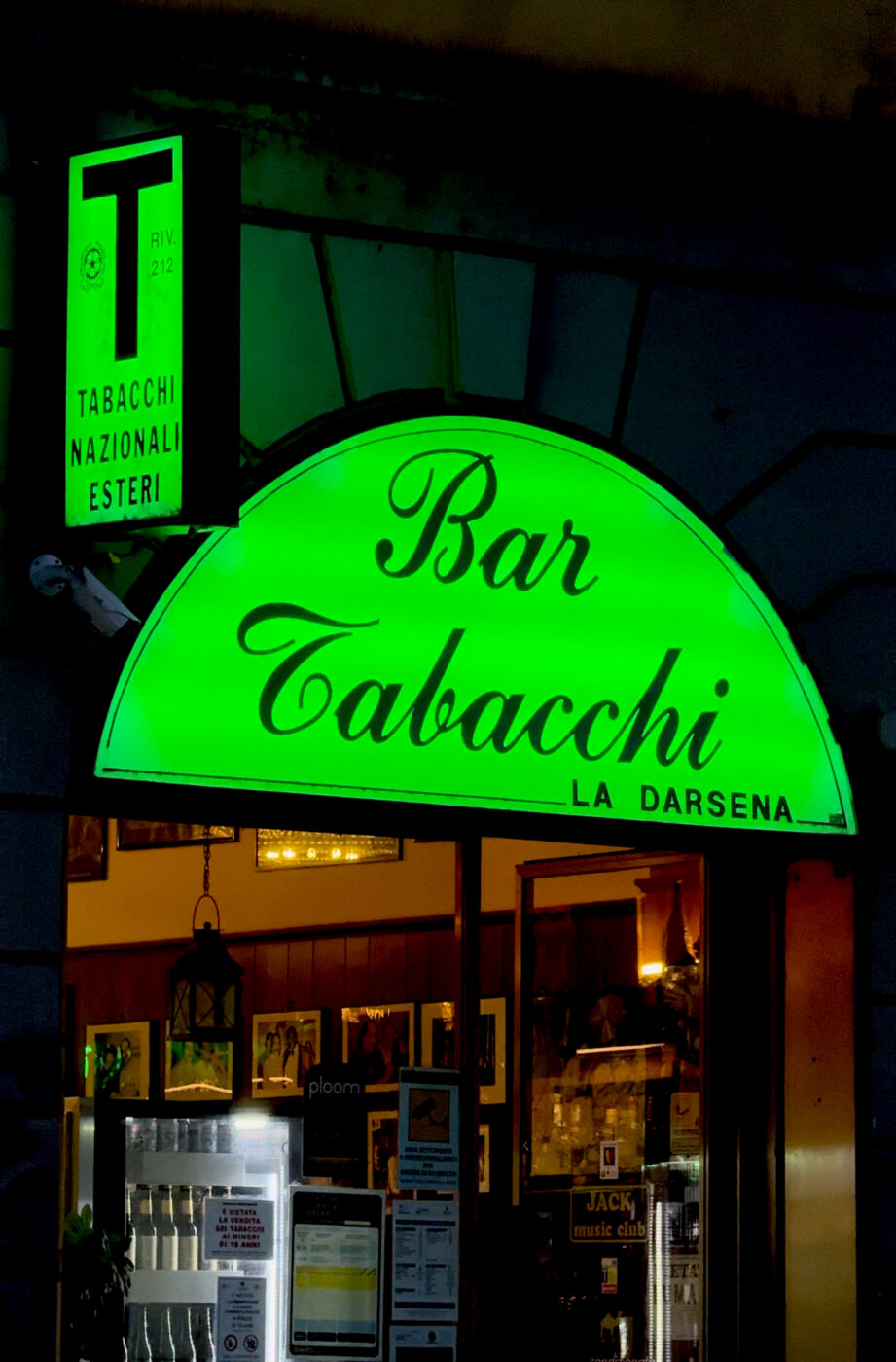“Stop watching Non è la Rai!” I can still remember the particular cadence with which my mom would yell at my sister on any given day in the 90s. A rebel and a social butterfly in one, my older sister rocked very-high-waisted Levi’s 501 jeans and white Superga canvas tennis shoes, carrying a much-too-heavy Invicta backpack, laden with Latin dictionaries and textbooks, on just one shoulder. Her hair was styled with a tuft at the front, meticulously put in place with an excessive amount of hairspray; it was almost as rigid as plastic. I’m pretty sure her hairspray usage can be held at least partly responsible for the hole in the ozone layer. She would almost always be chewing on a strip of Brooklyn gum–so long that she and her peers had to fold them against their tongues to fit them in their mouths, an almost ritualistic act among her group. The air at home was often filled with the scent of spearmint or unidentifiable fruit.
Being the fourth and last child of the household, coming a few years after my three sisters who were all born in the 70s, I had the chance to be in touch with the last archetypal and culturally influential era of young adulthood in Italy–that of Gen X. Let me explain this better.

Silvio Berlusconi
The 1990s were a pivotal time for Italian mainstream culture, shaped primarily by the rise of media mogul Silvio Berlusconi’s empire. He introduced a slew of commercial TV channels, offering a mix of entertainment, news, and talk shows, that revolutionized Italian television; it was his networks–among them, Canale 5, Italia 1, and Rete 4–that perhaps played the most significant role in shaping public opinion and cultural norms.
“He introduced a culture of luxury and sex, one entirely different from the traditions of austerity promoted by Catholicism and the communists,” wrote Alexander Stile of Berlusconi in The Sack of Rome. “His control of commercial television meant that he is the only politician in the world who helped create and shape his own electorate before it elected him.” And, at the center of it all, was the hypersexualization of women, whether it was the veline (showgirls) of Striscia La Notizia or what my mother considered to be the “Lolitas” of Non è la Rai who sang, danced, and engaged in playful antics in front of the camera. The show was hosted by the magnetic 16-year-old Ambra Angiolini, though producers shaved a year off her age to make the audience believe she was even younger.
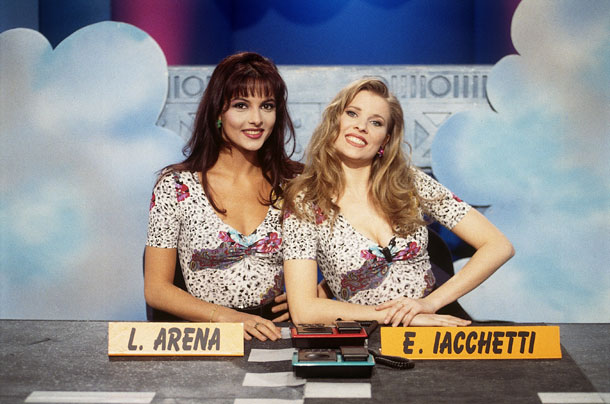
Miriana Trevisan and Laura Freddi, Striscia La Notizia, 1995
There’s much to be said, and much has been written, about how the objectification of women (and young girls) on these shows affected the generation, their perceptions of self worth, and the societal expectations of women. That said, and despite what you might expect the audience of these shows to be, it was a time when the feminine prevailed in the cultural cache (if you understand “feminine” to be what is stereotypically girlish).
Strawberry and cream and bubble gum flavors dominated, most likely thanks to the commercial success of Fragolino ice cream by Algida and “Big Babol” gum. School stationery was strawberry-scented too, and the 3D, the gummy, and the squishy were omnipresent. Pink was the color alla moda.
These flavors were likely a legacy from Gen X’s childhoods, when Barbies and My Little Ponies sold better if they were scented and/or pink, and strawberry and cream evoked a comforting Proustian memory they had no intention to leave behind: unlike their parents’ generation, they were in no hurry to become adults.

The Last Analogic Generation
My sisters, and the girls of Non è la Rai, belong to Gen X–coined by Douglas Coupland in his 1991 novel Generation X: Tales for an Accelerated Culture for those born between 1965 and 1980. Often confused with Baby Boomers, given their clumsiness with trends and technology nowadays, their teenage years were a time capsule of chemically delightful memories perhaps best epitomized by the 1995 show Generazione X with Ambra Angiolini, post her stint on Non è la Rai.
The show adopted the format of a talk show with 200 teens–girls and boys–discussing various topics like fashion, gossip, music, and family, as well as more taboo ones like drugs and sex. It didn’t just cater to young adults; it seemed to be completely managed by them. Each episode aimed to gather survey results on the day’s topic, with kids responding via a special remote control that offered four possible options; it was the way to know what was cool or not before trends were transmitted through every social media outlet. It was on this show that, for the first time in Italian TV history, a declaration of gay love was broadcast. It went like this: “This is a boy writing to you. It might seem strange, but I’ve fallen in love with one of the boys on the show. He has brown hair and a slightly large nose, which actually makes him very charming. No one at home knows about me yet, so writing this letter wasn’t easy. Please, help me.”

Amici, 1992
Generation X was the last to experience a teenagehood and young adulthood untouched by social media, untethered to the internet, and free from the omnipresence of computers in most households. In other words, it was the last analogic generation of humanity. Instead, it was shows like these–Generazione X first, and Amici later–that addressed youth issues and needs in a decade when their parents’ world was shattered. Teenagers had to reconstruct and take ownership over their own values, new values. Mafia assassinations, unbound inflation, blatant corruption, and rising divorce rates; it was a time in Italy when politics had lost its charm and adulthood was intimidating. Youth, meanwhile, was far more colorful and enticing. Piaggio Ciao mopeds, overly stuffed Smemoranda school notebooks full of teenage angst and crushes, Sony Walkmans, scented pink stamps, strawberry-and-cream-flavored everything marked this era in which adolescents were simply adolescents. And, for the first time in Italian history, the clash between generations was not borne out in street protests (as it was in the 60s and 70s), but through musical choices, TV programs, and chemically colorful snacks.
The Tabaccheria
The tabaccheria of the 90s was more than a place to buy cigarettes and lottery tickets. For Italian Gen X teenagers, it was the after-school spot, a treasure trove of sweets, treats, and cool stationery. Tubble Gum (neon pink chewing gum in a tube) and tongue-dying lollipops–“You’ll get cancer in your mouth!!” my mom used to warn–were the staples. “Big Babol” gums, designed for blowing the biggest bubbles imaginable (the bigger the bubble, the more popular you were) came in different flavors, but strawberry and cream was unsurprisingly the best. Tabaccherie smelled of a dizzying melange of smoke (in those days, you could smoke inside), air conditioning, and strawberry candy and were packed to the brim with not just junk food, but also video games and collectible gadgets; think tiny plastic pacifiers and scubidù vinyl cords, which girls spent afternoons twisting and knotting into intricate keychains and backpack accessories.
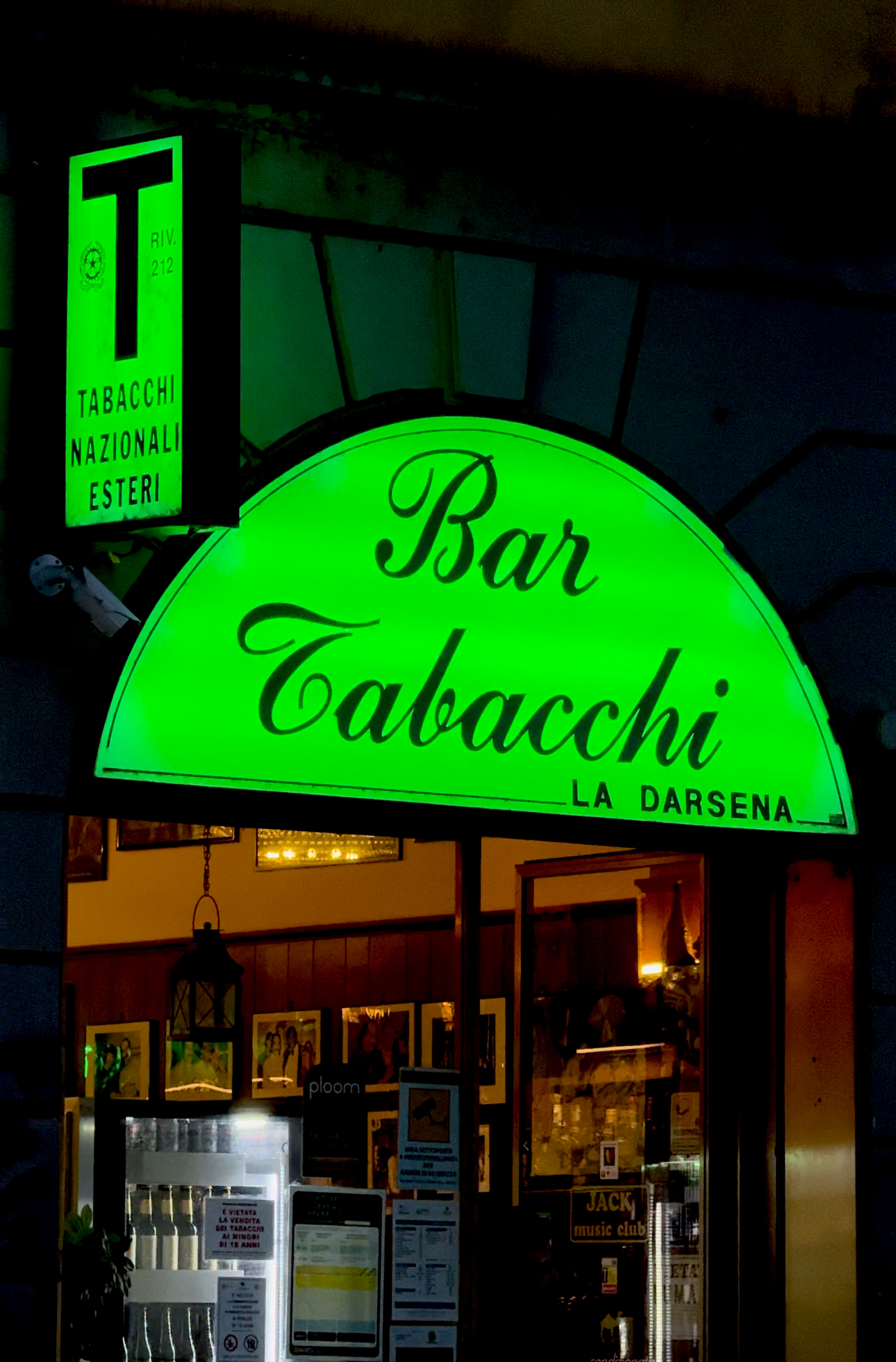
2-Calorie Foods
Having never known the war-induced hunger of their parents’ and grandparents’ generations, Gen X swung in the opposite direction–towards an obsession with all things low calorie. Dietorelle candies, which promised two calories a piece, were a firm favorite–especially the, surprise surprise, strawberry flavor. Who can forget the commercial in which the family’s toddler mocks the teenage sister by humming “fa la dieta, vuole fare la modella!” (“she’s on a diet, she wants to be a model!”)?
SlimFast, the first powdered frappe mix targeting teenage girls, also became a significant trend; the strawberry-flavored shakes were “guaranteed” to keep one in shape, without having to give up beloved plates like pasta. These were the days before bullying and body positivity were talked about–just ask Ambra Angiolini, whom journalists had the audacity to label as “fat” on more than one occasion.
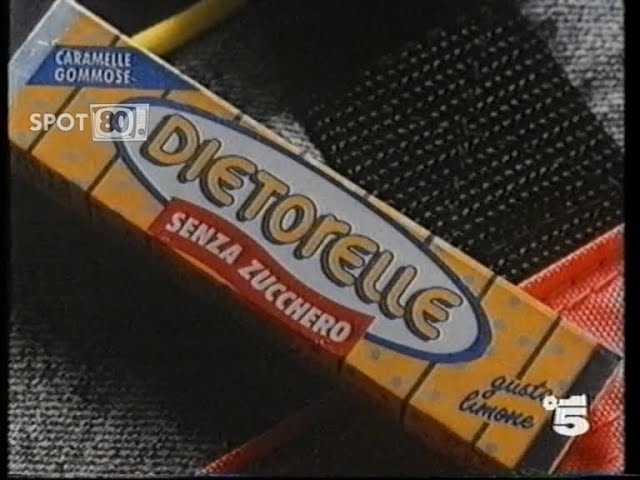
A Feminine-Powered Generation
If you look at the symbols and the outputs of this generation, it’s clear that they were driven by a strong feminine force (not necessarily female, but feminine). It’s no coincidence that the most prolific magazine of the era, Cioè, targeted girls as its primary audience. Italy’s equivalent of the US’s Bop and Tiger Beat, Cioè was exactly what you’d expect–gossip, fashion tips, extractable posters of male celebrity crushes to be plastered onto bedroom walls. Other reading materials included romance novels–all the rage. The biggest bestseller was Và dove ti porta il cuore (English title Follow Your Heart) by Susanna Tamaro, whose plot aimed to impart the eponymous lesson to young girls.
Looking back, it’s easy to see why this generation and this era hold such a special place in Italian cultural memory–and yet, Gen X often feels forgotten between the much riffed-on Baby Boomer and Millennial divide. I remember being a child, watching my Gen X cousin baking her Nike Air Max sneakers in the oven “so that the pillowy heel bumps up!” with awe and amusement (bear in mind, there was no tutorial back then)–and here I am, at times perpetuating the stereotype of Gen X as a generation of awkward misfits, too accustomed to face-to-face meetings and for whom the digital arrived after adolescence had already ended. We are often viewed as “younger Boomers”, and yet we struggle to identify with that generation’s values, though we can often be just as clumsy with and suspicious of today’s technology. Maybe we are misfits, but I dare say that Gen X was, in many ways, the last truly iconic generation in Italy. Must have been all the strawberries and cream.



